- Reflect on the importance of establishing and maintaining relationships.
- Identify the three main types of relationships of a school-age staff member and ways to implement them.
- Describe the importance of friendships and identify methods to help children make friends.
Learn
Know
Positive Relationships: An Introduction
As humans, we need the affection, attention, and acceptance of other people. Relationships are such an important part of the human experience that it is difficult to think about what our lives would be like without them. Think about all of the relationships you are a part of. Some are professional and others are personal. Some are superficial, while others are rooted in a strong bond. Chances are, if you think about your favorite memories as a child, there was another person with you in most of them. We need people in our lives to bring us joy, to measure our potential, to learn from and to live with. Children’s ability to establish relationships is a crucial part of social-emotional development. This ability will help children be successful as they grow. As a school-age staff member, there are three main types of relationships you will see in your program:
- Adult to child relationships. This type of relationship is between you and the children in your care.
- Peer-to-peer relationships. This type of relationship is between two children. These relationships are often called friendships, however not all children are friends. It is important to promote positive relationships with all peers.
- Adult-to-adult relationships. This type of relationship will be evident in your professional relationships with your colleagues, family members, and other professionals or community members.
Adult to Child Relationships
The adult to child relationships created in your program are vital to creating an environment built on trust and community. The relationships you create with school-age children should be ones of mutual respect. Positive relationships with adults help children feel good about themselves and encourage them to be active and participatory in their learning. Research shows that children with positive adult role models and relationships have reduced stress levels, higher academic achievement and can form healthier peer relationships than children without these relationships.
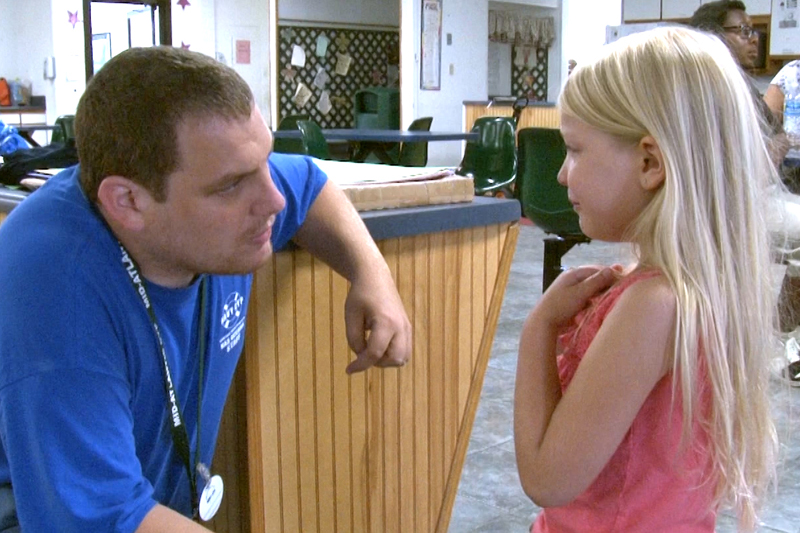
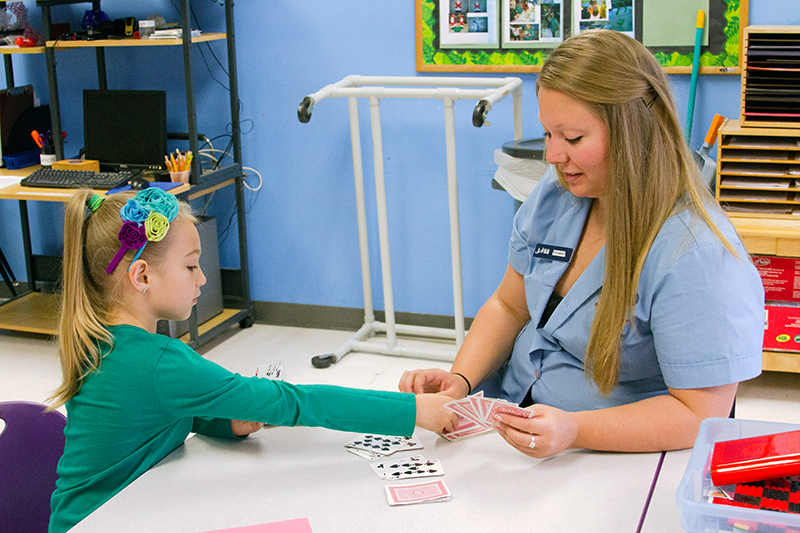
According to the Council on Accreditation's After School and Youth Development Standards, methods to create positive relationships with children include:
- Helping children feel welcome, comfortable, and supported
- Recognizing positive accomplishments
- Treating children with respect
- Listening to what children say
- Responding to children with interest, acceptance and appreciation
- Being consistent and following through on what you say you will do
Peer-to-Peer Relationships
Friendships are a necessary part of a child's social-emotional development. According to the American Academy of Pediatrics, friendships allow children to "broaden their horizons beyond the family unit, begin to experience the outside world, form a self-image and develop a social support system." Because the ability to establish and maintain friendships will be necessary throughout our lives, it is considered one of the most important goals of social-emotional development for school-age children.
Making and keeping friends is especially important for school-age children because their friends play many parts in their lives, such as:
- A companion: Someone to spend their time with, share common interests and enjoy each other's company
- A confidant: Someone to share secrets, to engage in pretend play and to share thoughts and feelings
- An ally: Someone to be a team with and to face difficult tasks with
- A support: Someone who provides stability and motivation during difficult times
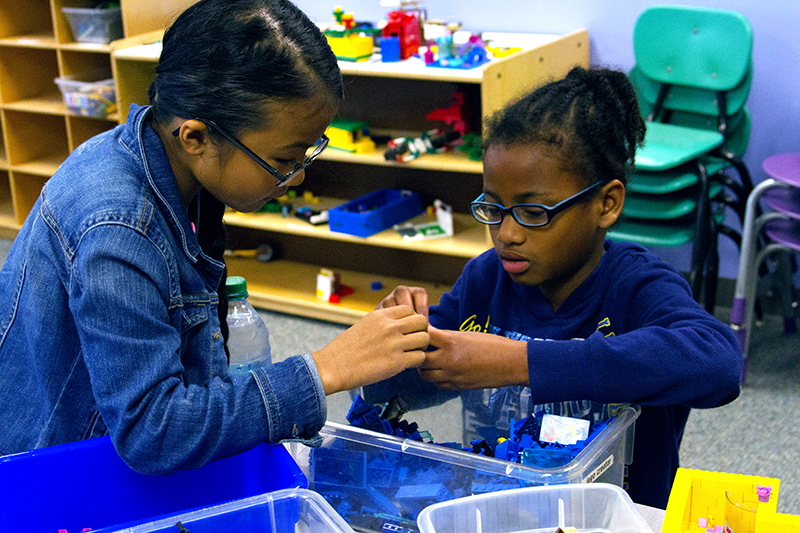
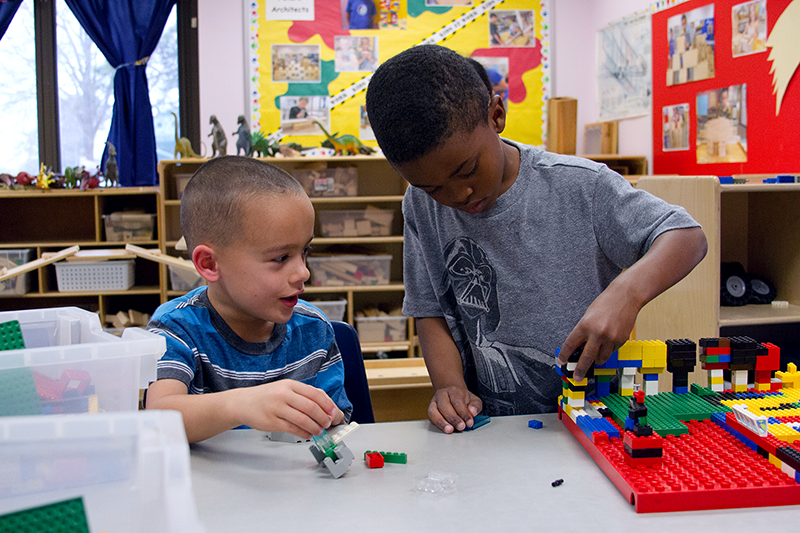
As children age, the types of friendships they form change from those rooted in common interests, and often convenience, to those of deeper emotional bonds. The earliest form of friendship, those usually seen in younger school-age children, are formed out of common interests. Children who enjoy the same games, books or sports may bond while enjoying their favorite activities. These friendships are also created out of proximity and convenience and children in the same class or program, or children who live near each other, are more likely to be friends than those that do not. The next stage of friendship development is one of shared values and rules. These types of friendships are rooted in something stronger than a shared interest. They typically appear in older school-age children. These peers bond over similar outlooks on life, values and ethics. Also, children with similar temperaments and play patterns will tend to seek each other out as friends. Around puberty and in the preteen years, children tend to form larger peer groups, sometimes referred to as “cliques.” In many cases, children in a large circle of friends can be highly influenced by each other and often times take on similar ways of dressing, talking or specific behaviors.
Helping Children Make Friends
As a school-age staff member, you should encourage healthy friendships. A healthy friendship is a reciprocal one-where children take turns making decisions such as choosing activities. Friends should be able to work together to solve a problem or issue and genuinely enjoy each other's company. Children who have been exposed to positive relationships at home typically have an easier time making and keeping friends. They have an understanding of the normal give-and-take found in healthy relationships and know how to apply it to their peer relationships. Children who have not been surrounded by examples of positive relationships may have difficulty making and sustaining healthy friendships.
There are many reasons a child may struggle when trying to make a new friend. Children may not have mastered the social-emotional developmental milestones, or they could be shy or aggressive in nature. A child's personality and temperament plays a large role in their ability to make and keep friends. It is important for you to understand how to identify a child who might need help establishing friendships. Helping a child that is having a difficult time making friends can make a very big difference in a child's life, as this is a skill that will be used throughout life.
Helping a Shy Child
A child who is shy might need your help navigating social situations and making friends. However, before you intervene, observe the child and determine if he or she is actually in need of assistance or just slower to open up to others and make friends. If you determine a child is shy and does need help, consider the following:
- Connect: Take time to get to know the child’s personality and temperament. Observe the child in the learning environment by watching play patterns, preferred activities and interactions with peers. This will help you to get a sense of who they are, and might help you to match them up with another child. You should spend time talking and establishing your own relationships with these children. They need to trust you so you can help them branch out and make new friends. You will also want to gain a deep understanding of their personality and temperament, something that can only be done through engaging in conversations and participating in activities with them.
- Express: Encourage children to express themselves. During conversations, it is important that you encourage them to express their feelings. You can do this by asking questions and providing motivation. It helps to be familiar with children’s interests so you can discuss topics that are important to them.
- Shine: Create opportunities for children who are shy to shine and be the expert. Once you have taken the time to get to know a child, give the child the chance to come out of his or her shell. Depending on the child’s interests, talents or skills, give the child an opportunity to demonstrate a skill or discuss something important. Children who are shy sometimes need help feeling good about themselves. Helping them feel important and special is a great way to boost shy children’s self-esteem.
- Search: Help children find healthy friendships. Use what you know about the children in your program to find good matches for children who are shy. Make sure that you are mindful when setting up children to work together in groups or share activities. Encourage the formation of healthy friendships by pairing a shy child with another child who has similar interests. You may need to give the children conversation starters to help them realize their similarities.
Helping an Aggressive Child
It is inevitable that you will also have children who have a difficult time controlling their behaviors or who are not able to clearly express what they are feeling. These children might have aggressive or domineering personalities and need help building relationships. These children may have trouble interacting with others, taking turns and cooperating. You might find that some children who have had difficulties in their lives, have low self-esteem, or feel lonely act out in aggressive ways. As a school-age staff member, you will help these children find healthy ways of expressing themselves so they can improve their social skills and establish healthy relationships. When helping a child who is aggressive make friends, consider the following:
- Observe: Take the time to observe the child in the learning environment. Watch for patterns or triggers that bring on the aggressive behavior. Try to understand why they act out or become angry. Whenever possible, help them avoid these behaviors by intervening before the situation escalates. Also, take time to understand their interests, skills and talents. Similar to working with children who are shy, you will need to establish trust to help and develop a healthy relationship so you can understand the reasons behind their aggression.
- Root: Try getting to the root of the problem. If you feel a child is acting out aggressively because there may be a bigger problem at home or in school, bring it to the attention of your supervisor. Meeting with the family to try to understand the cause of the problem could be beneficial.
- Consequences: Help the child understand how to express himself or herself in healthy ways and understand the consequences when he or she doesn’t. Give children ways to cope with their anger or frustration so they do not act out aggressively. You can suggest taking deep breaths, reading or writing in a journal. Be consistent in your redirection and consequences. If you tell children that they will not be able to participate in a game if they continue to throw the game pieces, you have to follow through.
- Set Limits: Boundaries and clear expectations that will help children understand what is expected of them and what will happen if they behave in a positive way. Reinforce positive behavior and redirect negative behavior. Refer to the Guidance course for more information.
- Control: Once you are able to gain an understanding of why the child behaves or reacts the way that he or she does, you can work on controlling those behaviors. You can help children establish friendships by creating opportunities for them to work with children that share interests, skills and talents. Just like when working with children who are shy, these children need the opportunity to be an expert and share their knowledge to boost their self-esteem.
Helping a Child who is Anxious
As our understanding of mental health has developed, engagement with childhood psychiatric issues has become a regular part of care. You will most likely see a wide range of childhood mental health issues in your experience as a school-age staff member but research has shown that anxiety disorders are the most common type of these issues in children (Piacentini & Roblek, 2002). Children with anxiety disorders may exhibit some of the same behavioral issues as children who are shy or aggressive, such as a failure to speak around others or throwing tantrums. While certain accommodations can be made during program hours, some of the most effective strategies you can employ are forming positive relationships, building trust, and modelling coping skills. Encouraging the child to build friendships with others and strengthen their own coping mechanisms is the key to helping these children reach their full potential within your program. Consider using some of the following strategies to accomplish this goal:
- Validate and Brainstorm: During a busy day, it may be tempting to simply tell a child to relax. In children who have anxiety disorders, this may simply cause them to redirect their anxiety onto something else in their lives. Instead of asking them to suppress their anxiety, listen while they express their worries, and then calmly redirect them towards brainstorming solutions to these worries with you.
- Reframe: Just like how our minds can sometimes get carried away, children can become focused on hypothetical, “what if…” problems when experiencing anxiety. Encourage them to think about whether their worries are true or assumed. Asking a child to label their worries and practice reframing skills can help them stop their anxious thoughts from spiraling and causing larger program disruptions.
- Coping Skills: Teaching children to choose relaxation strategies when anxious can help them build calming skills for the future. Deep breathing exercises, muscle relaxation techniques, and mindfulness practices are all excellent self-soothing strategies. Consider creating stress balls as a craft activity or inviting a yoga instructor to the program as a guest.
- Empathize: Children who experience anxiety may feel alone or isolated. Relate times when you have felt anxious to model for them that anxiety can be overcome. Help them build a library of positive outcomes and be an example of properly dealing with anxious thoughts.
Adult-to-Adult Relationships
As a school-age staff member, you will also need to establish positive relationships with other adults. These adults may be your colleagues, supervisors, community members, and families. For more information on establishing relationships, refer to the Communications and Families courses. When working to establish and maintain relationships with other adults, it is important to consider the following:
Engaging With Families
- Families can be your program's window into culturally responsive experiences. Invite families to share meaningful experiences.
- Provide opportunities for families of children in your program to meet and get to know each other.
- Invite families to observe and participate in some of your program activities.
- Send home books about emotions and social-emotional skills with children.
- Encourage families to nurture social-emotional skills at home by extending some of your classroom and school experiences in the home environment.
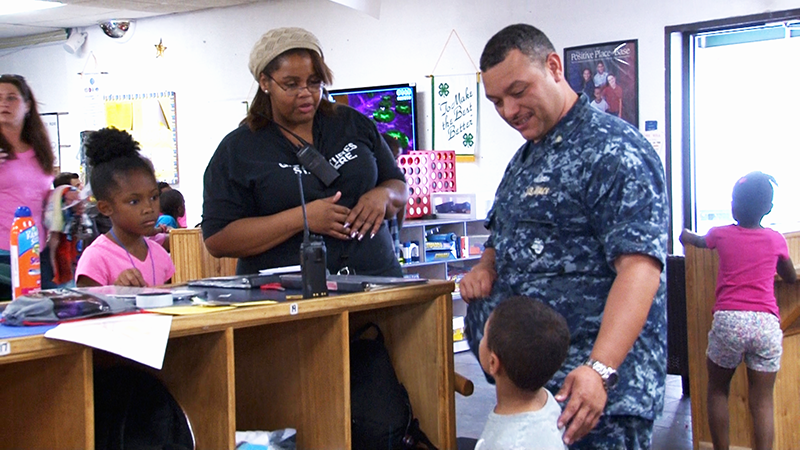
Engaging With Colleagues
- Connect with your colleagues. Share your interests and experiences with colleagues during staff meetings, lunch breaks, or in-service days. Explain how these interests drive some of the experiences you create for children in your program. Get to know the people who you work with on a personal level.
- Exchange ideas with colleagues about experiences that foster social-emotional growth. Invite a colleague to come to your room, observe some of your activities and give you feedback. Offer to do the same for your colleagues.
- Ask a coach, supervisor or training and curriculum specialist to observe you so they can offer you feedback about your use of materials and experiences to promote children's social-emotional growth.
- Acknowledge other colleagues who are doing great things, who offer you guidance and constructive feedback and who inspire you to strive for excellence and be a team player.
- Keep it professional. Avoid talking about your personal life while at work.
- Establish lines of communication. Have regular check-ins with other colleagues so you can discuss any concerns before they become problems. It is also good to discuss program planning ideas. Keep families informed by providing regular forms of communication and maintaining an open-door policy.
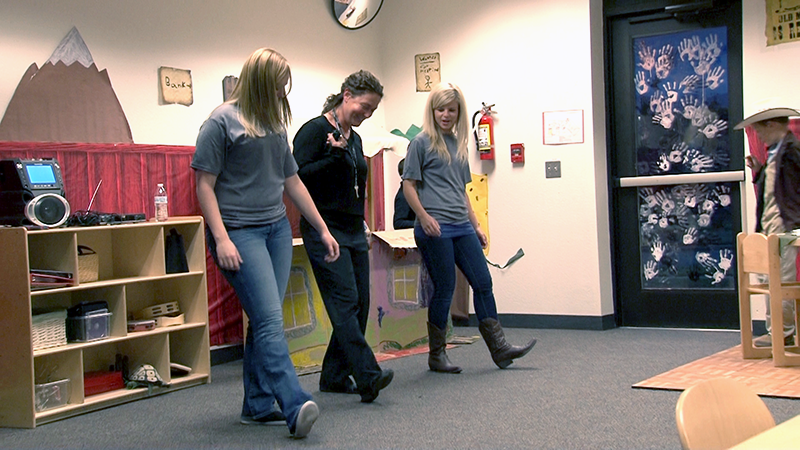
The relationships you have with other adults in the program also serve as a way to model healthy relationships for school-age children. Always stay calm, professional and respectful when speaking to another adult and ensure your body language is positive.
See
Social-Emotional Development: Positive Relationships
Do
What does it Mean to be a Socially-Emotionally Competent School-Age Staff Member?
As you have been reading in this course, social-emotional growth and development is a crucial part of the human experience: It helps us learn things about ourselves, establish and maintain relationships with others and allows for meaningful learning experiences. In your daily interactions with children in school-age programs, it is your responsibility to build relationships with and foster relationships among children by designing supportive environments and by being responsive. Building relationships is an essential, primary component of good teaching.
In your work, you are responsible for creating meaningful experiences that incorporate opportunities for the practice of social-emotional skills throughout the day. Being a socially-emotionally competent staff member can be expressed in a number of different ways:
- Taking the time to work on establishing and maintaining relationships with children and colleagues in your program
- Trying to work things out and problem solve solutions to challenges
- Demonstrating flexibility
- Allowing yourself to make mistakes
- Being nurturing and responsive
- Trying new things
- Asking for help or support when facing difficulties
- Helping others in need
- Being willing to accept new or different perspectives
- Embracing diversity
- Being open-minded
- Sharing your own emotions and thoughts
Explore
Helping children establish and maintain positive relationships will require you to observe children in the learning environment. View and complete the Observe: Relationships activity. When finished, share your work with your trainer, coach, or administrator.
Apply
Some children will need your help making friends. Take a look at the Helping Children Make Friends activity. Brainstorm ideas for each scenario. Share your finished work with your trainer, coach, or administrator.
Demonstrate
American Academy of Pediatrics. (2004). Caring for your School-Age Child: Ages 5-12. Schor, E. L., Ed. New York: Bantam.
Council on Accreditation Standards for Child and Youth Development Programs. Retrieved from https://coanet.org/cyd-standards/
Huebner, D. (2006). What to do when you worry to much: A kid’s guide to overcoming anxiety. Magination Press: Washington, D.C.
Hurley, K. (2018, October 11). Helping kids with anxiety: Strategies to help anxious children. Psycom. Retrieved from https://www.psycom.net/help-kids-with-anxiety
Joseph, G. E., & Strain, P. S. (2004). Building positive relationships with young children. Young Exceptional Children 7, 21-29.
Joseph, G. E. & Strain, P. S. (2003). You’ve Got to Have Friends. Center on the Social and Emotional Foundations for Early Learning: Training Materials.
Piacentini, J., & Roblek, T. (2002). Recognizing and treating childhood anxiety disorders. Western Journal of Medicine, 176(3), 149-151. Retrieved from https://www.ncbi.nlm.nih.gov/pmc/articles/PMC1071700/


